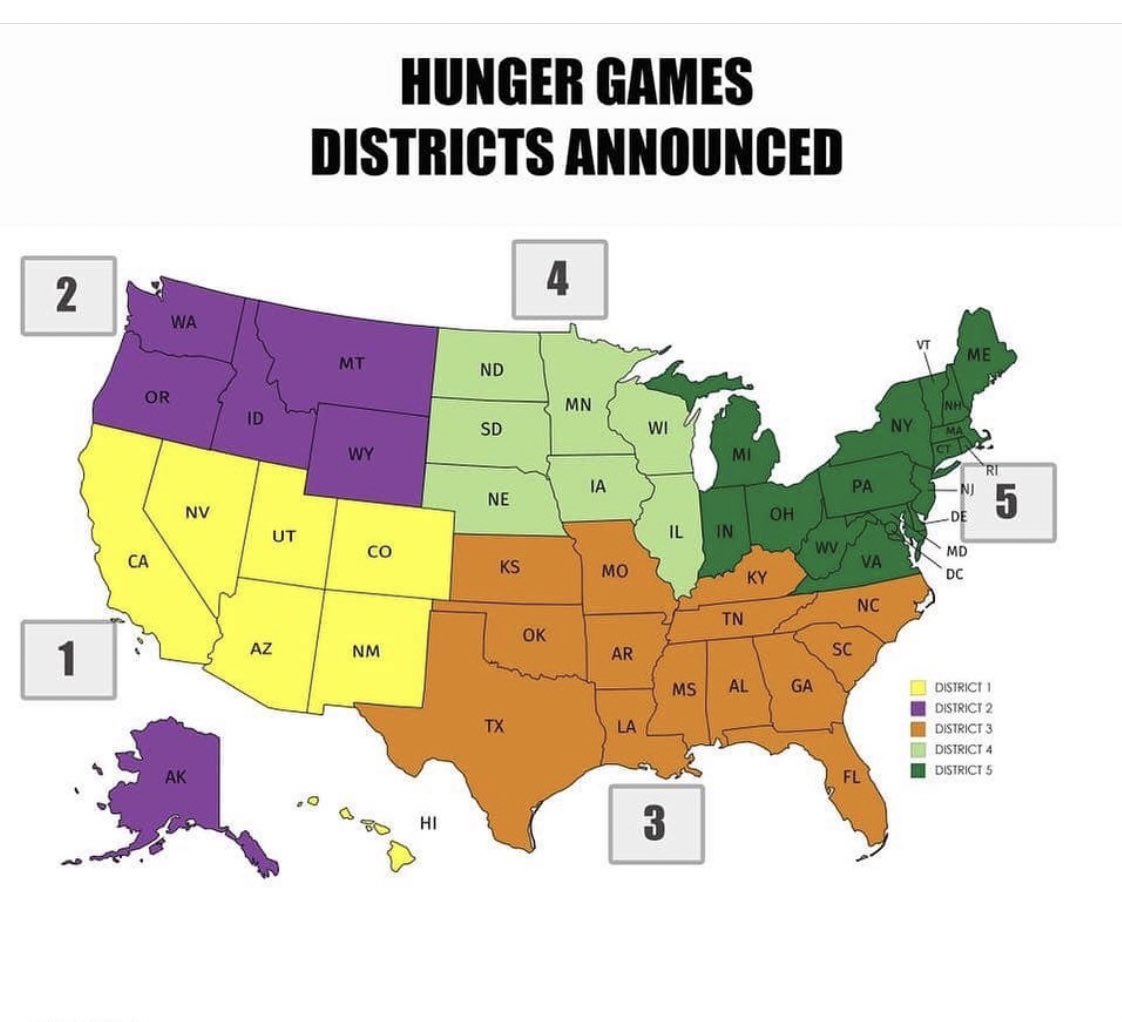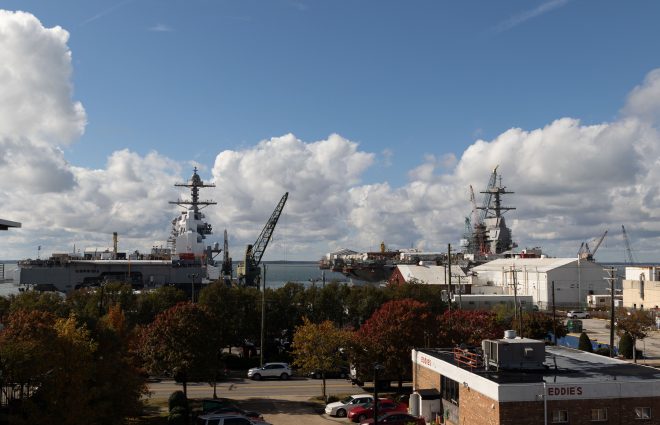Hmm, my gut says it comes down to 3 vs. 5. The Appalachian mountains provide a certain amount of natural barrier between them but they can work around that eventually.
There's at least one military base in every state so everybody's going to have some, but they're disproportionately located at the coasts and more so on the east coast. District 5 is going to have most of the military leadership due to having Washington DC and also has a big chunk of the big important bases like Norfolk.
I'm presuming that railroads, bridges, and highways are going to be hit in the first few hours as each district tries to cut off access from its enemies. Additionally, only morons are going to heavily congregate their military assets along a highway or railway track where the other districts can easily predict their movements and hit them with long-range bombardment. This means terrain and choke points are going to play a huge role.
District 1 has a solid number of military bases in California (And a major one in Hawaii) but little else going for them, and much of that is naval. Further, the large population of California is largely unarmed and unmotivated to go to war, making mobilizing them very difficult. The logistics of managing to get those assets across the Sierra Nevadas, then huge dangerous deserts (or small and really dangerous ones like Death Valley), then hundreds of miles of flyover country makes their ability to attack anybody but District 2 very difficult. Meanwhile, the reverse is true of District 3, Texas would be able to easily mobilize and take out large chunks of District 1 on its eastern borders, putting itself in easy range for aircraft and missile strikes on California population centers while also keeping a good strategic depth for their own population centers.
District 2 has three states with some of the highest gun ownership in the country, unfortunately, those states are Idaho, Montana, and Wyoming and they have very small total populations so it doesn't translate into a very large number of actual people with firearm skills. Worse, they're right next to District 1 and the only viable target for District 1's large navy. They are also split by the Rocky Mountains which will basically turn them into two districts, the relatively sparsely-populated but well-armed east and, well, the western half gets Portland.
District 3 has a very decent chunk of military bases, many of them are especially large and well-equipped as well like Tinker Airforce Base, Fort Bragg, Fort Hood, and the Naval Construction Battalion Center. On top of that, they have the Texas Rangers, Bubba, and Florida Man. Eyeballing it, I estimate their military is only a bit below District 5 but their armed civilian and militia population dramatically outstrips everybody else. This armed population also has a seething hatred of the populations of Districts 5 and 1, and they will be highly motivated to attack them. Overall I think I give them the best odds though not remotely a sure thing.
District 3 does have one huge weakness, the Mississippi Basin. It will give them an unbeatable advantage when transporting things along the ridiculous number rivers, letting them bite deep into 1, 2, and 4 territory with ease. At the same time, we can reasonably expect every bridge to get hit almost immediately by long-range missile attacks, cutting its territory in 2 as far as ground travel goes. They do have the main base of the Seabees in their territory so they can in fact build stuff pretty danged quick but that will only help so much. They probably will need a crash-building project on getting a ton of ferries going for transportation over rivers.
District 4 is just hosed. They lack both significant military assets and significant populations. The population centers they do have are places like Chicago that are more likely to turn into internal bloodbaths rather than mobilize to go attack the enemy. On top of that the two bordering districts with the easiest chance of attacking them are the powerhouses 3 and 5.
Overall I give the best chances to District 3 but it's not a sure thing.



